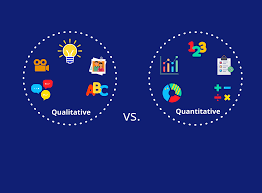Integrating qualitative and quantitative data
The mixed method, qualitative and quantitative, research design has been viewed as the most complicated process when it comes to research analysis. For this reason, different tactics which are essential have been implemented for a sound approach and the implementation of the rules of the data coming together. However, the mixed method research design is of greater significance due to the following reasons.
- Triangulation: When a researcher uses different sources to look for data validation of each of the method’s findings, (Fielding, 2012)
- Initiation: The results from either method may bring out new research questions which require being analyzed further, initiating the other study project with multiple sources of data, (Bazeley, and Kemp, 2012)
- Expansion: The researcher tends to develop one technique by using the find of the other.
- Complimenting: The researcher complement findings from a particular source with the utilization of the various source of data.
Ethical issues and feasibility constraints
When conducting research, the moral deliberation should be at the front position as the researchers get on ant capable future research. It is vital for the researcher to be by the ethical requirements. It means that the researcher has to consider the following ethical issues:
- Confidentiality: Companies might opt to be anonymous, and it is okay to employ pseudonyms for the firms and the person in a business enterprise studied.
- Permission: The researcher should not assume that they can video/sound record or even take photographs. It is necessary to seek for approval before undertaking the process and also request permission when in need to employ direct quotation and secure the image of the quoted author where appropriate, (Bryman, and Bell, 2015)
- Communication: The researcher is mandated to officially write to the person to be involved in the research highlighting the agenda to be discussed, (Mertens, 2014)
Budget and time constraints constrain the feasibility of the study. It is vital for the mixed methods to carefully consider the access of different source of data in line with the significance permission as well as the extra time required to gather and analyze various types of evidence, (Bell, J., 2014). It is usually impractical for a comparatively green student researcher to get the appropriate time and more so resources for such a complicated and time-consuming manner.
Significant barrier to the integration of qualitative and quantitative data
The most important barrier as far as the combination of the qualitative and quantitative data is concerned different audiences, (Glogowska, 2015). After the researchers have used both the methodology to come up with complete results, they at times feel that they end up writing their results from the qualitative and quantitative analysis for diverse audiences. That is, either the scenery of the content is attractive a particular audience or the notion of the readers and vice versa.
The mixed method’s expectation at times means that whichever set of data draws attention to or employed more or less entirely. The opinion of such expectation of the viewers or readers might cause the researcher to be biased on the keeping out one of the research method or make it of less significance while stressing on the other, (Venkatesh, Brown, and Bala, 2013)
Bibliography
Bazeley, P. and Kemp, L., 2012. Mosaics, triangles, and DNA metaphors for integrated analysis in mixed methods research. Journal of Mixed Methods Research, 6(1), pp.55-72.
Bell, J., 2014. Doing Your Research Project: A guide for first-time researchers. McGraw-Hill Education (UK).
Bryman, A. and Bell, E., 2015. Business research methods. Oxford University Press, USA.
Fielding, N.G., 2012. Triangulation and mixed methods designs data integration with new research technologies. Journal of Mixed Methods Research, 6(2), pp.124-136.
Glogowska, M., 2015. Paradigms, pragmatism and possibilities: mixed-methods research in speech and language therapy. International Journal of Language & Communication Disorders, pp.1-10.
Mertens, D.M., 2014. Research and evaluation in education and psychology: Integrating diversity with quantitative, qualitative, and mixed methods. Sage publications.
Venkatesh, V., Brown, S.A. and Bala, H., 2013. Bridging the qualitative-quantitative divide: Guidelines for conducting mixed methods research in information systems. MIS quarterly, 37(1), pp.21-54.
Want help to write your Essay or Assignments? Click here


